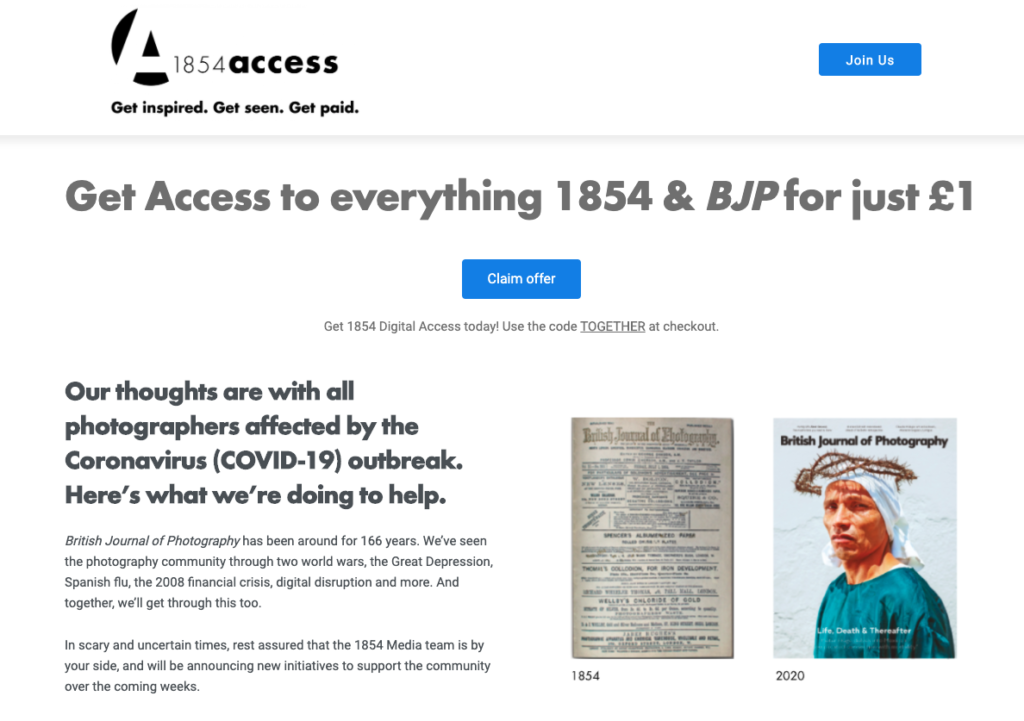Might subscriptions be the lifeline for specialist media? Social distancing is hitting newsstand sales for specialist magazines. Advertising revenue is becoming harder to secure. And live events have largely been cancelled.
But most well established, quality specialist media brands do have a hard core of loyal customers – their subscribers. Nurturing this community and developing innovative ways to expand it could be the best survival strategy for publishers. And the added benefit of subscribers is they pay upfront for their content, helping your cash flow in challenging times.
I’ve gathered 10 ideas to try out to boost your subscriber base.
1. Connect with your subscribers and enlist their help
First step is to start a dialogue with your subscribers. British Journal of Photography publisher 1854 Media has set up a facebook group for their members to share experiences and support each other. Singletrack already has a large forum – their publisher made an appeal to readers at the start of the current crisis and received a boost in renewals and new subs. Specialist media are well loved, and if you ask for support, readers will share the word, recommend friends and are more likely to renew. Try offering an early renewal or an extension to a 2-year subscription to established subscribers – this obviously works better with CC than DD.
2. Build up your online prospect list – try new sources
Now is the time to beef up your email newsletter, and actively try to convert web visitors and social followers to registered users. Consider putting some high value content behind a registration wall to gather data. Over time, London Review of Books estimate that 7% of people on their email list become paying subscribers. So building your email list and providing valuable content is likely to pay back in subs revenue over the medium term.
3. Test new introductory offers – promotional pricing
Several publishers offer short term discounted offers – 12 issues for £12 for weeklies, 3 issues for £3 for monthlies. A good benchmark for your promotional price is working out your breakeven point. If your product is good, then you should see a fair number converting to a full priced sub after the initial quarter.
4. Test new acquisition sources – partners or affiliates
Do any of your advertisers or partners have a strong mailing list? Can you build in a special subscription offer for their audience? Granted renewals might be lower (as with promotional pricing) but as long as the first year is profitable it will contribute.
5. Focus on your digital subscription option
If you have a digital subscription, the chances are your margins are greater than for print copies. So investing time and marketing in your digital only proposition will deliver cash to the business faster. And you can add value to a digital sub at low cost – archive access or digital back copies are appreciated by readers.
6. Convert international print subscribers to digital
The logistics of posting international print copies are likely to be challenging for some months. Consider offering your international subscribers a swap to a digital only subscription (maybe with a term extension as a goodwill gesture). For those wedded to print, consider a print on demand option.
7. Add a premium sub option by adding value
Some of your most loyal subscribers might be prepared to pay you more. Work out how to create a premium package with extra benefits (archive content, access to editors or contributors) that are valued but don’t add unnecessary cost, and market the upgrade to your current subs.
8. Reduce print frequency (while adding value)
This option needs to be handled carefully, but if you already offer some digital benefits as well as print copies, you could reduce print frequency, say from 12 to 6 issues or from 6 to 4 issues. Try increasing production values or pagination, push up the cover price, and hold the subs rate.
9. Sell other products to subscribers
Loyal subscribers are bought into your brand, so consider selling related branded merchandise – bags, mugs, compilation print products, T shirts, caps…. London Review of Books launched a dedicated online shop for merchandise and have built up a 6-figure revenue in a year. Singletrack sell a popular range of branded merchandise.
10. Try a crowdfunder
One niche publisher I know sent out an appeal to their community, and an enterprising reader set up a crowdfunder to help support the publishing team through the crisis. Outside the publishing realm, London Drawing, who run practical small group events for amateur artists, raised £2500 from their email and social audience to pay their tutors to run a series of free online art classes during the lockdown. So you might be surprised just how much your audience care about your publication!
If you have another idea that could help specialist publishers grow their subscriptions revenue, do share your experience. If you’d like to talk through these ideas in more detail and how they might apply to your business, do get in touch.
About the author
Carolyn Morgan has bought, sold, launched and grown specialist media businesses across print, digital and live events. A founder of the Specialist Media Show (sold in 2014) she now advises media businesses large and small on their digital strategy through her consultancy Speciall Media.
Find out more about the advice we provide for publishers

